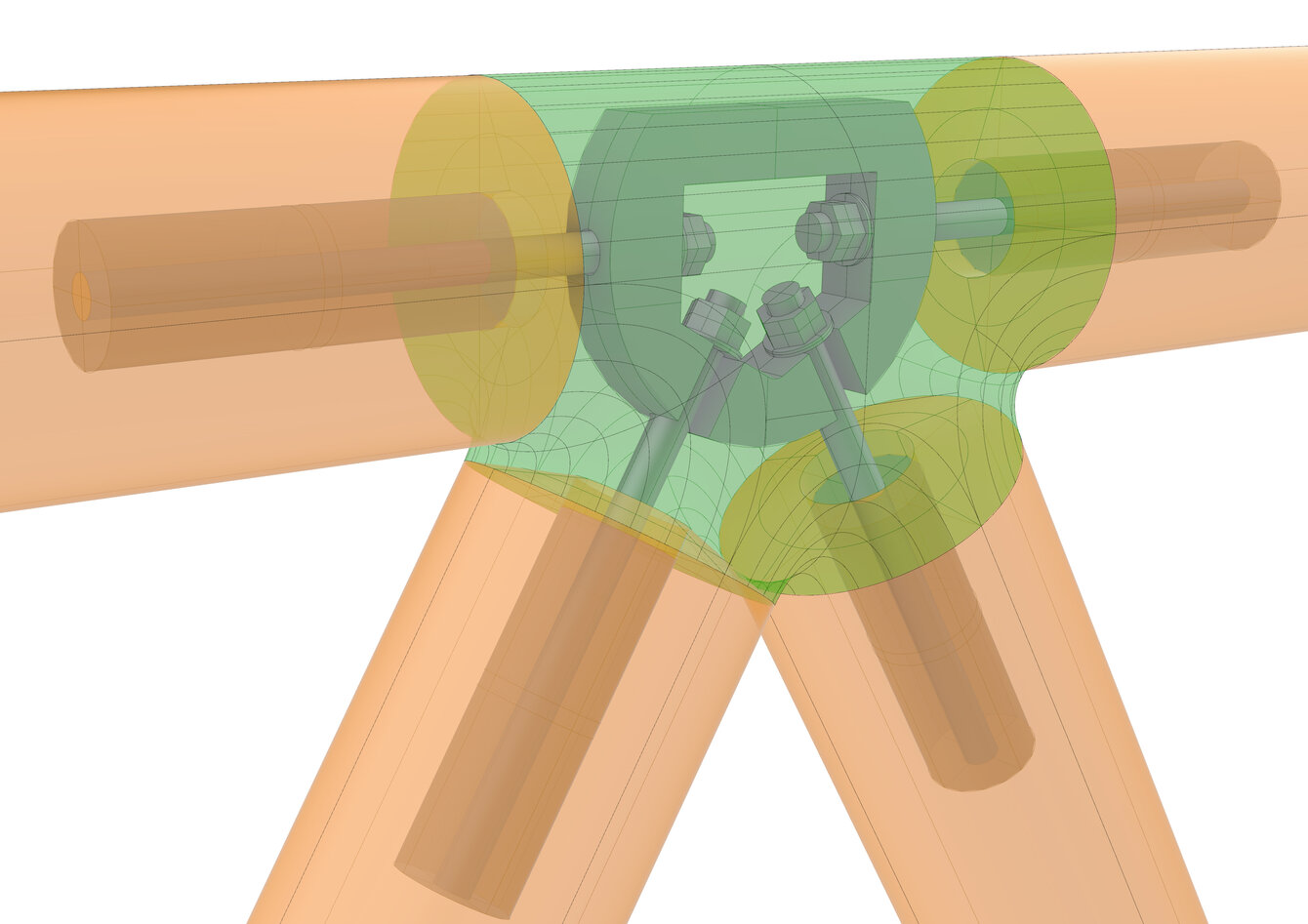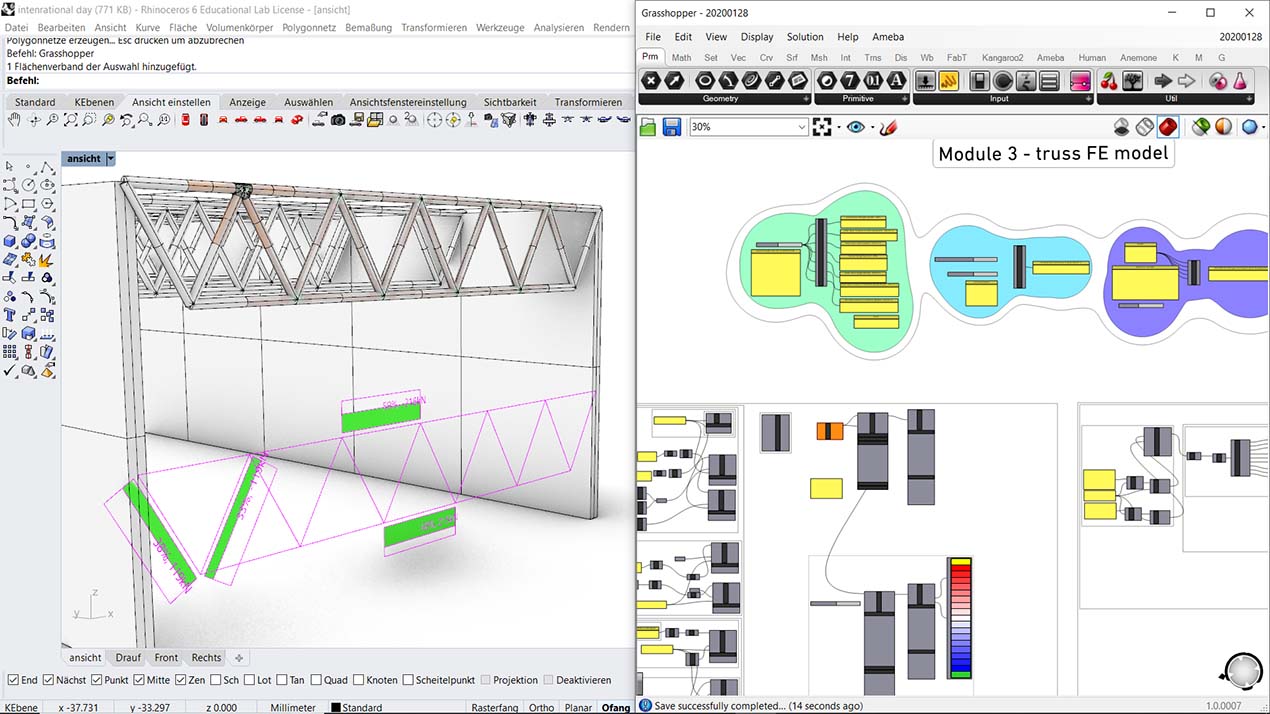Round Timber 2.0
Part 1: Modular and grouted joining technology for 2D trusses in round timber
Prof. Dr. Schober
To overcome restrictions of existing connection methods and to increase the usability of round timber in the building sector, new joints for 2D truss structures need to be developed. To achieve this aim, this research proposes a new hybrid joining technology for 2D trusses in round timber, which (i) optimizes the connection configuration in round timber with an increased load bearing capacity and (ii) joins round timber members in the intersection by new modular and bio-based composite joints with only uni-axial loading in timber grain direction.
This research project focuses on developing (i) a new connection configuration in round timber and (ii) a new modular and bio-based connection to join round timber strut members in the intersection.
Glued-in threaded rods in the axial direction of the strut members represent the basis of the new connection technology, which has to be developed further to increase the load bearing capacity and to ensure the usability for outside constructions as well as an easy quality control of the bonding process. The research approach is based on a substitution of the compound material of glued-in threaded rods by epoxy resin systems with mineral additions with the objective of increasing the drillhole diameter and contact surface with timber and therefore ultimate failure load.
The hybrid intersection joint comprises an inner steel structure and an outer bio-based shaped body with epoxy resin systems and wood fibres. The inner steel structure takes over the tensile loads, while the outer shaped body performs with the ability to transfer the compressive forces. The connection ensures a high degree of pre-fabrication, an assembly on construction site with no time-consuming grouting process, a substitution of individual components in case of damages, an accessibility to digital fabrication processes including 3D print, an accessible structural design approach and a form-fitted architectural design.
Part 2: Architectural and structural design algorithm for interactive planning
M.Sc. Tarick Chahade
Structural design has changed over the decades. In the 19th century, master builders merged the responsibilities of engineers and architects. During that period, both fields progressed with the focus on art and technique. Moreover, the present digitalization of our environment has changed the profession once again and has created the field of Parametric Design and Engineering, where engineers adapt the main themes of architecture and computer science. To overcome restrictions of existing design methods, parametric software has been used to create a new sustainable and interactive modelling algorithm for round timber 2D trusses with an increased ecological and economic efficiency of the design process.
Parametric Technologies offer new possibilities for structural engineers from the first creative draft to automated and interacting design processes. Compared to general available computer aided design software, parametric methods do not define or design fixed geometries. They rather create a dynamic geometry with different types of parameters. Changing those parameters results in a different structure. An alternative appearance can be generated immediately without setting up a new structural model and the possibility to change afterwards implemented values.
Traditional design methods with iterative workflows should be replaced by parametric design algorithms, which enable a range of benefits in the framework of 2D truss designs: (i) efficient integration and automated update (in case of design changes) of cost, architecture, engineering and manufacture, (ii) usability of the same algorithm for several structural designs with time and cost savings, (iii) architectural, structural, manufacture and economic dependencies captured and optimized interactively and (iv) analyzing massive amounts of data in real time to cut down construction process times. The research approach is based on a more efficient exploitation of contemporary digital software offered to create a new design methodology (interactive Structural Design), which contributes to cost- efficient placing of the technology in the market. The objective of a new design algorithm is crucial for round timber 2D truss structures to compete against other joining technologies, such as metal plate connections.

